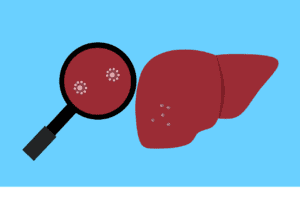Alagille Syndrome
What is Alagille syndrome?
Alagille syndrome is a rare genetic disorder that affects multiple organ systems in the body, including the liver, heart, skeleton, eyes, and kidneys. However, the specific symptoms associated with these organ systems vary greatly from person to person, even within the same family. Liver disease is one of the major features of Alagille syndrome, along with a reduced number of bile ducts. Heart abnormalities are also common in patients with Alagille syndrome, such as impaired blood flow from the heart into the lungs and pulmonic stenosis.What causes Alagille syndrome?
Alagille syndrome is caused by mutations in one of two genes: the JAG1 gene or the NOTCH2 gene. These mutations are inherited in an autosomal dominant manner, but sometimes, they occur randomly due to a spontaneous genetic change.What are the symptoms of Alagille syndrome?
Common symptoms of Alagille syndrome that often develop in the first three months of life include the following:- Blockage of the flow of bile from the liver (cholestasis)
- Yellowing of the skin and mucous membranes (jaundice)
- Poor weight gain and failure to thrive
- Severe itching (pruritis)
- Pale, loose stools
- Heart murmurs and congenital heart defects
- Back bone abnormalities
- Distinctive facial features such as deeply-set and widely spaced eyes, a pointed chin, and broad forehead
How is Alagille syndrome diagnosed?
Since the symptoms of Alagille syndrome are so variable, a diagnosis of the condition is difficult. After a detailed patient and family history and a thorough clinical evaluation, a variety of specialized tests can confirma a diagnosis of Alagille syndrome. Most often, a liver biopsy can reveal bile duct paucity, which is a key characteristic of Alagille syndrome. In addition to this bile duct paucity, if an individual has three out of the five following clinical findings of Alagille syndrome, a diagnosis is made:- Symptoms of liver disease or cholestasis
- Heart defect
- Skeletal abnormality
- Eye abnormality
- Distinctive facial features
What are the available treatments for Alagille syndrome?
There is currently no cure for Alagille syndrome, so treatment is symptomatic and supportive. Once diagnosed, children should have a baseline echocardiogram to look at heart problems, an ultrasound of the abdomen to look at liver and kidney problems, and an eye exam to evaluate vision and eye problems. Supplemental treatment with vitamins is necessary is Alagille syndrome causes malabsorption in its patients. For cholestatic liver disease, the drug ursodeoxycholic acid can help improve bile flow, and antihistamines, rifampin, and naltrexone can be administered to help treat pruritus. In more severe cases, children with Alagille syndrome may need to undergo surgeries, such as partial biliary diversions for the bile ducts or liver transplantation for severe liver complications.Where can I find more information on Alagille syndrome?
Alagille Syndrome Articles

Eighth Grader Ella Has Raised $5K for Alagille Syndrome Research and Support
Jessica Lynn
August 14, 2023
Read More »

Bylvay Now Approved for Cholestatic Pruritus Caused by Alagille Syndrome in Patients Aged 1+
Jessica Lynn
June 15, 2023
Read More »

LIVMARLI Now Approved for Children with Alagille Syndrome as Young as 3 Months Old
Jessica Lynn
March 29, 2023
Read More »

Study of the Week: Scientists May Have Found a New Therapy for Alagille Syndrome
James Moore
February 13, 2023
Read More »

Scientists Discover Potential New Treatment for Alagille Syndrome
Jessica Lynn
February 6, 2023
Read More »

INTERVIEW: Albireo’s CEO Ron Cooper Talks Patient-Centricity, PFIC, and Study Updates
Jessica Lynn
January 3, 2023
Read More »




